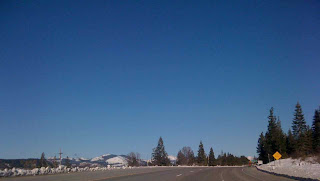Monday, January 31, 2011
January 31 - What a Web
Do a video for Diabolic Variations:XXXI in the early morning and write last night's Marin Symphony review for Commuter Times. Here it is...
***
Orchestras have been criticized for playing nothing more than museum pieces, and the Marin Symphony, this past Sunday at Veterans Auditorium, did little to dispel this perception in a program of all-Austrian music (F.J. Haydn and W.A. Mozart) spanning the 20-year-period 1868 to 1888.
Oh, for an orchestral concert of works from 1988 to 2008: how radical would that be? It happens with certain orchestras in San Francisco. It happens in popular music all the time -- in the latter case, perhaps as an "oldies" program.
That said, an oldies-classical program better be good. And in this case it was, sorta. In any case, it is difficult to argue with Mozart's 223-year-old Symphony No. 41 ("Jupiter"), his last essay in the genre, showing the composer at the top of his game, showing off, and yet not showing off, in a work of profound craft and ingenuity. And the Marin players, under the capable baton of Music Director Alasdair Neale, captured the animation and energy.
The volume was another matter. It has become quite fashionable, of course, in the past few decades to present "historically informed" performances... attempting to recreate the music as it would have been heard in its day. This has resulted in the explosion of "period ensembles, "playing on replicas of instruments that would have been available at the time. While this is clearly impossible in the case of a large-scale organization playing on "contemporary" instruments, such orchestras, the Marin Symphony included, have partially accomodated this trend by slimming down their numbers when playing comparatively earlier music. This not only achieves what is considered to be a more proper balance between strings and winds, it also saves money (could this have been a factor in such an all-classical-era-concert in our own depressionary-recessionary times).
In any event, worthy as this experiment may be, it doesn't factor in the venue. Most symphony halls -- the Marin Veterans Memorial Auditorium included -- were designed for large-scale, late-romantic-type repertory. Slimming down the orchestral numbers onstage in this case can simply result in a slimmed-down sonic experience, especially for those sitting in the back (I moved from the front to the rear of the hall during intermission, to experiment in this regard).
Another take on period-accuracy could therefore be the final emotional effect. Hey, this music was for a little group in a little hall, so the sound would have been pretty powerful to the up-close listener. Why not replicate this by pumping up all the factors? I'm speaking heresy, here.
And here's more. Contemporary orchestras are large-scale, post-romantic groups. Why not just let-em-rip? Contemporary audiences are attuned to, and indeed expect, a large dynamic range...
And another performance-practice observation. Despite the by-now-only-semi-authoritative H.C. Robbins Landon edition of the Haydn Symphony No. 49 ("La Passione"), which shows no continuo part, it has become quite fashionable to play such a work with an added harpsichord part (there are obviously at least some persuasive scholarly reasons for this -- perhaps iconography or literary evidence from period). But the result is perhaps an over emphasis on the delicacy of the music, versus the daring passion. The piece in question does date from so-called "Sturm und Drang" ("Storm and Stress") times, and is only somewhat convincing in its unusual four-movement structure of slow-fast-dance-slow and unusual F minor tonality (the only Haydn/Mozart/Beethoven symphony in this key).
The centerpice of the program was Robin Sutherland's refined take on Mozart's Piano Concerto No. 25. While Sutherland always evinces the highest levels of musicianship, there were two strange moments: a cadenza that seemed rife with the aura of anachronistic harmonies and voicings that seemed more appropriate to Beethoven, and a pause in the music that was either a quixotic, planned comic moment or an extremely well-handled actual mishap. In any event, this was a performance that kept listeners, as in the "Jupiter" finale, on the edges of their seats.
***
Blitz
off
to DVC for Theory, with the dictation-keyboard-solfege on Sol Bloom's Snake Charmer, plus the F Lydian and Major Scales, then home again to pick up Harriet before heading off up into the
Sierra snow near Blue Canyon, past
Emigrant
and
Yuba
Gaps,
Cisco Grove,
Castle
Peak,
over Donner
Summit,
through Truckee Meadows
and
its
dizzying,
snow-shedding,
cliffy
Canyon,
to
Verdi
and
greater
Reno,
to
pick up
Megan at
Dawn's.
Back
we
go
again
in
the
fading,
intense
light,
of
Boreal
and
Gold
Run, and back for dinner and conversation. Compose page five of Psalm 46 thereafter.











































